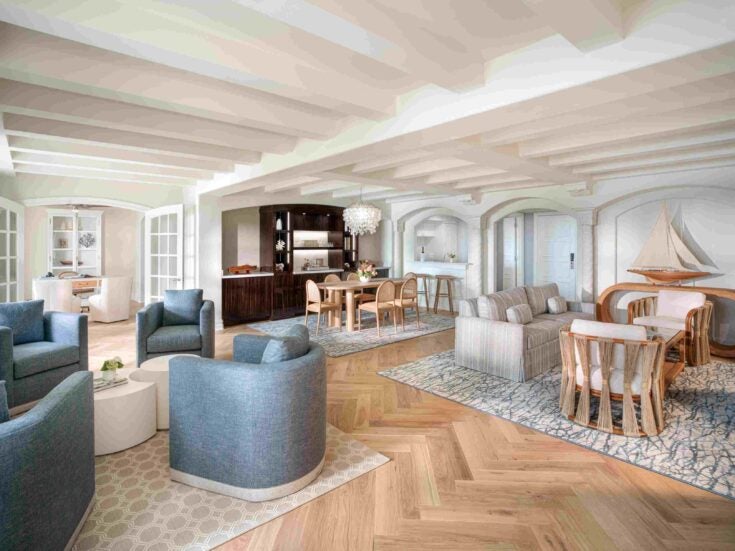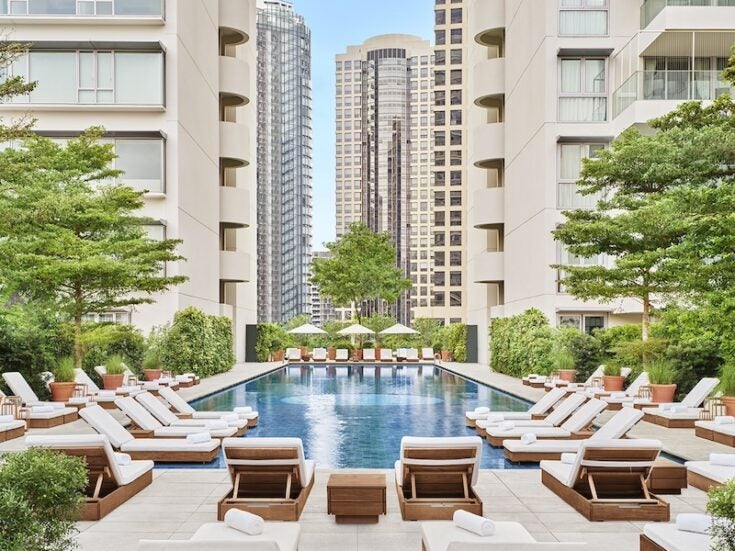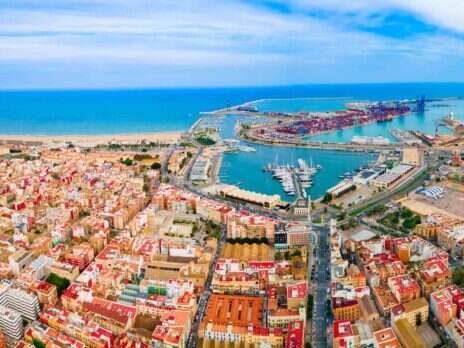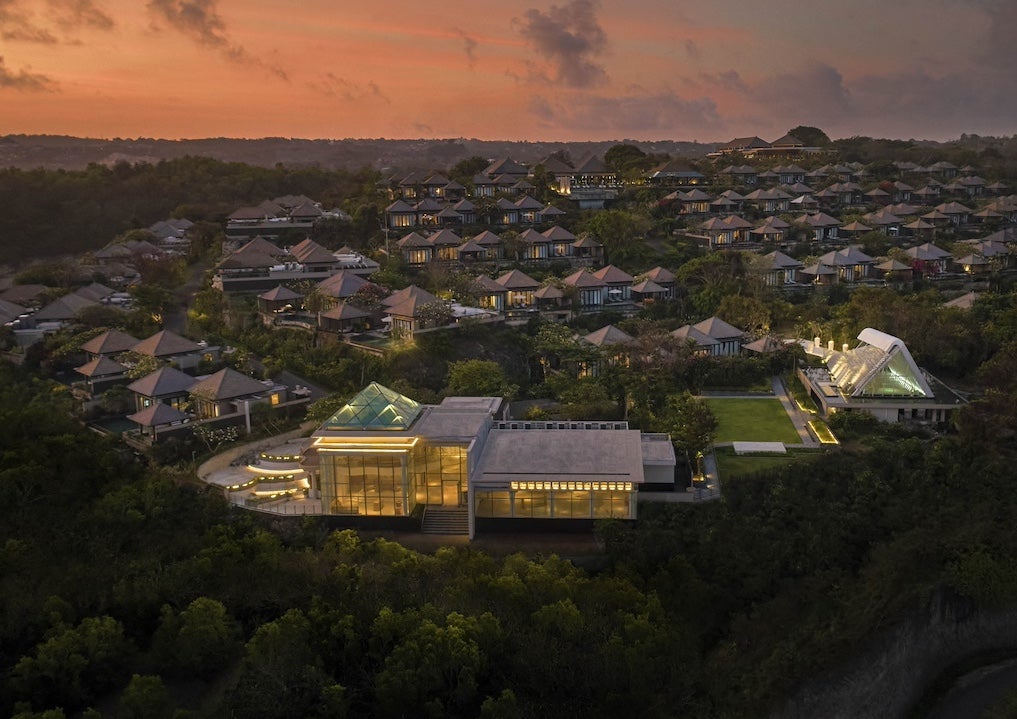
Late last year, Umana Bali Resort – the first LXR hotel in Southeast Asia – opened its doors. Or, more specifically, it banged its welcome gong, as there are no actual doors in the serene yet slick welcome lobby, where a trickling water feature sits beneath a chandelier that mimics the movement of Balinese dancers. And the gong, which is struck when guests arrive, pays homage to the philosophy of the coconut in Bali (no building is to be taller than the coconut tree, as the ‘upper level’ is considered a sacred place).
Guests are presented with a bracelet of three intertwining colors – red for creativity, black for reservation and white for afterlife – representing the circle of life that is woven into the Balinese way of life. It’s this concentration of little details that make up the fabric of this resort – a sense of place is established immediately and is felt at every step.
The resort’s location is pretty spectacular; it’s at the southernmost point on the island, on a clifftop some 230 ft above Melasti Beach in Ungasan, and the sunsets here are hypnotic. (Note: Be sure to book either villa 218, 219 or 221, as they have the best views over the beach and out to sea.)
[See also: The Best Private Island Resorts in the World]
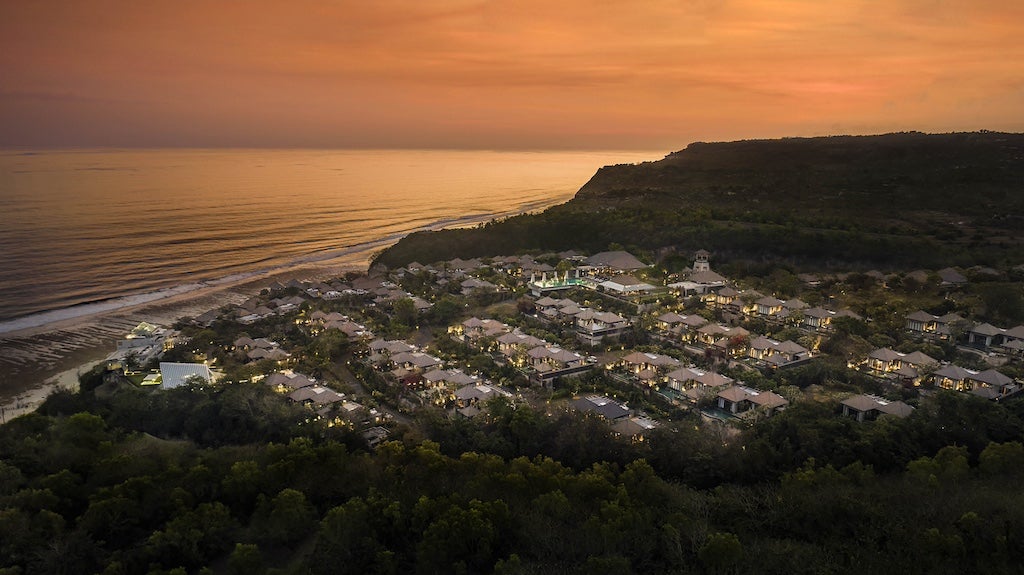
The resort only has villas – starting at 4,340 sq-ft, each one has an infinity pool and hot tub (the bedroom has floor-to-ceiling windows and sliding doors so you can step directly into the pool from your bedroom), a spacious deck with lounge chairs, a daybed, alfresco dining space, an outdoor shower, plus a blossoming frangipani tree — the flower is used in Balinese offerings and is a cherished symbol of the island. Inside, there’s a large living area and dining space, guest bathroom, enormous master bathroom with a deep soaking tub, his-and-hers vanities and a dressing area.
But be warned, reader: If you leave any of the sliding doors open, you might be sharing your space with a monkey or two. I learned this the hard way as a particularly cheeky monkey tried to make off with my bikini top, which resulted in a standoff (I won).

The largest villa is the Three-bedroom Umana Ocean View, set within its own 12,915-sq-ft estate. There’s an indoor dining room with space for eight, a marble-clad bar with an adjacent pool table, a huge tub, outdoor and indoor rain shower, and a living room with a piano. Outside, there’s an 82-ft infinity pool and two spaces for alfresco dining. Organize an in-villa BBQ with juicy chicken satay and succulent lamb as you watch a traditional Legong performance; the ancient dance tradition is seriously impressive as the dancers’ dynamic finger-bending moves and intense facial expressions leave audiences in a trance.
It is all too easy to spend days lying in the hot sun, especially as villa service is a mere WhatsApp away; you can be chowing down on nasi goreng (Indonesian fried rice) within half an hour. But do pay a visit to Lohma Spa — there’s a sauna, steam room, hot-and-cold plunge tubs and eight treatment rooms including a couple’s room. It would be almost criminal to not have a Balinese massage here; any knots will be undone and tense shoulders melted away. An in-villa massage can also be arranged; I had mine set up next to the infinity pool, and the soundtrack of the ocean waves had me asleep in minutes.
[See also: The Most Luxurious Eco-Friendly Hotels]
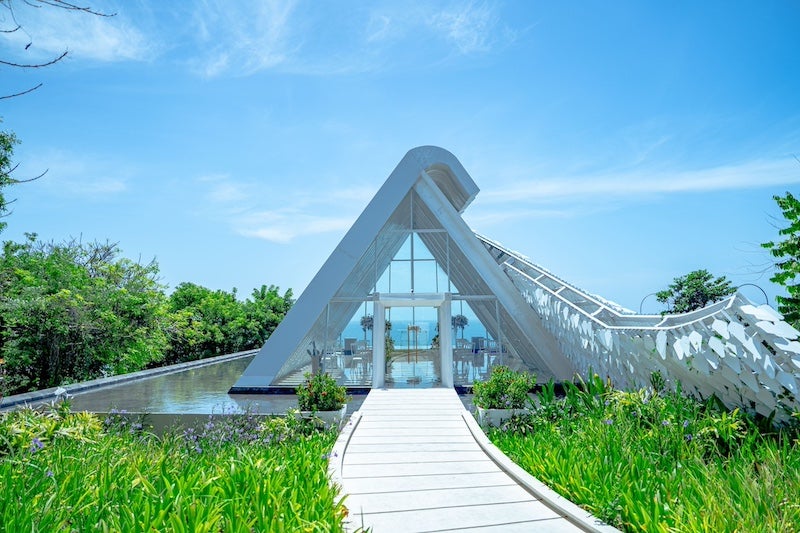
The beach is a very short drive away (as I type, a pathway from the resort down to the beach is being created for those who would prefer to walk) and Umana has a dedicated space with lounge chairs, chilled white wine and watermelon juice. Melasti Beach is also home to an amphitheater — don’t miss the Kecak dance show. A hugely popular event, the traditional dance originated in Bali during the 1930s and was created by a Balinese artist named Wayan Limbak in collaboration with Walter Spies, a German painter and musician.
They developed the Kecak dance by drawing inspiration from ancient Balinese ritual dances and including elements from the Hindu epic, the Ramayana. No musical instruments are used throughout — instead, a large group of male performers chant ”cak“ in various rhythmic patterns. The dance depicts the story of Prince Rama and his quest to rescue his wife, Sita, from the demon king Ravana. It is a riot of color, drama and spectacle — bales of hay are set alight and performers dance right through the flames. (The first few rows are in the ‘splash zone!’)
[See also: Flight of Fancy: The Wayfinder’s Journey]
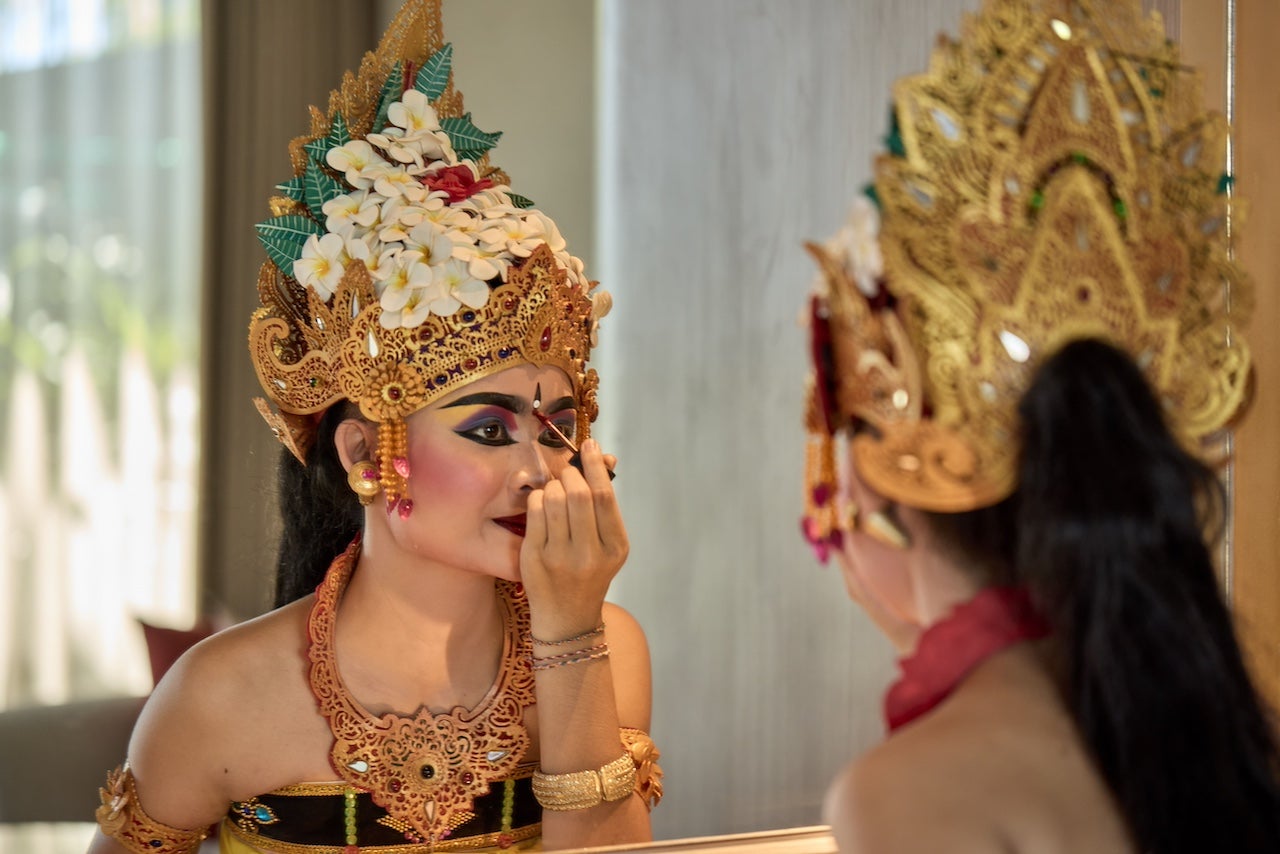
These immersive cultural experiences are precisely what makes Umana so magical — during my visit, we created our own canang sari, meaning offering to the gods. An important part of Balinese daily life, these offerings are made to give gratitude and demonstrate devotion to the gods. You’ll see them laid out throughout the island. In a small basket fashioned from pandan leaves, we arranged vibrant flower petals in a position relating to a certain god — yellow flowers to the West, a symbol of Mahadeva who has a third eye on his forehead; blue or green flowers point to the north for Vishnu, who is described as a blue being.
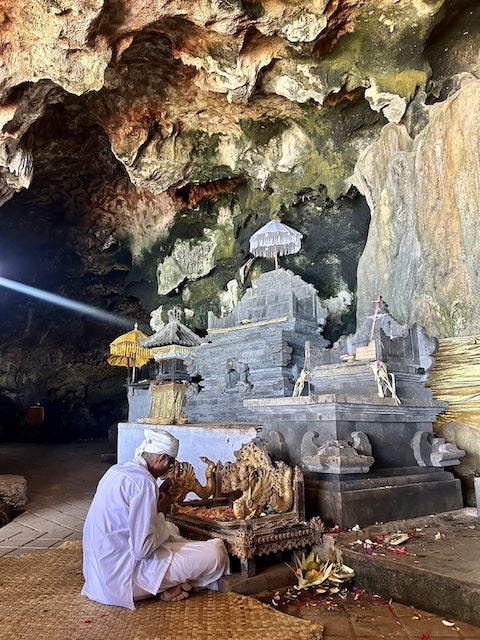
Canang sari in hand, we visited a temple to make our own offering to the gods before making a steep ascent into a cave overlooking the Green Bowl Beach, a small and secluded cove. Within the cave resides Pura Batu Pageh, a lesser-visited ancient temple where we had our souls blessed (note that the blessing includes water being poured on your head, so it’s best to wear something lightweight that you don’t mind getting wet!).
The enthusiasm to welcome visitors into the Balinese culture and way of life is constantly felt; we walked from Umana to a nearby marketplace before stopping at a Balinese home for a traditional breakfast. The intricate architecture of the house was astounding, even more so when our guide explained that Balinese measure materials by hand — showing us that some sections were three fingers wide.
Over a breakfast of klepon, a sweet rice cake ball filled with molten palm sugar and coated in grated coconut, our guide, rooms division manager Agus, casually mentions that he shares his home with his wife, children and 26 dogs. He rescued most of them (some were in need of serious veterinary care after being victims of street fights). We asked if we could see them; instead of being horrified at the prospect of a bunch of writers showing up on a Tuesday afternoon, he and his wife warmly welcomed us and introduced us to some of the many dogs.
The following day, we chartered a yacht for the day to sail around Nusa Penida and Lembongan, enjoying a lunch of lobster and scallops as we marveled at the scenery. We were lucky enough to see a pod of dolphins, and we practically leaped into the dinghy to get a bit closer — seeing them up close as they frolicked and spun in the water was a profound moment, and we were giddy with joy. Back on the yacht, we made a smooth voyage back to Bali and watched the sun dip beneath the horizon, turning the sky a vivid shade of purple, as we sipped on chilled Bintangs.
One-bedroom tropical Garden Pool Villa from $845 per night in low season. Contact umanabali.reservations@hilton.com, +62 361 300 7000, hilton.com
[See also: Four Seasons Seychelles Resort at Desroches Island: Castaway Luxury]


